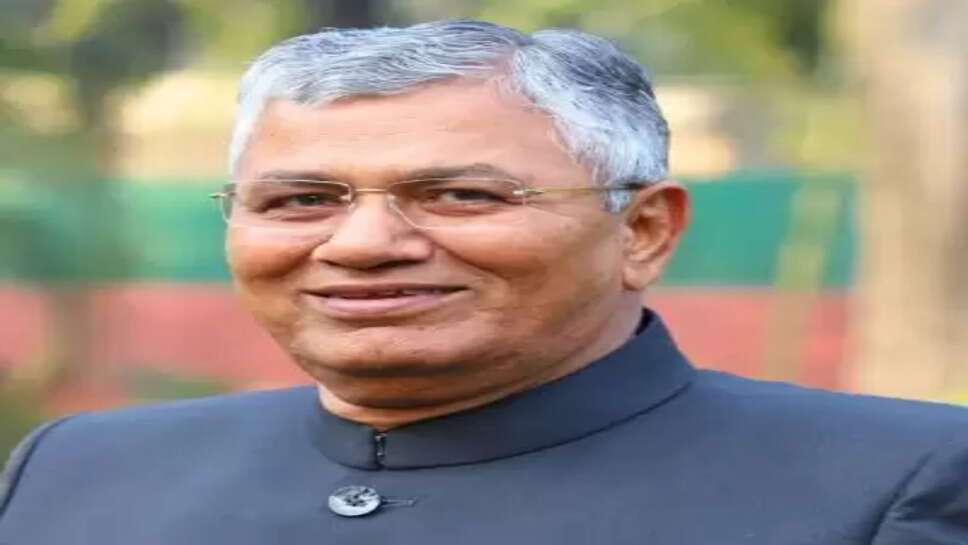Earliest for Simultaneous Polls Under Existing Bills: One Nation, One Election Panel Chief

The idea of "One Nation, One Election" (ONOE) has been a recurring theme in India’s political discourse, with the aim to synchronize elections to the Lok Sabha (the lower house of Parliament) and all state legislative assemblies. This synchronization is intended to streamline the democratic process, reduce the frequency of elections, and save significant public expenditure. However, despite being discussed for decades, the implementation of this ambitious proposal remains a distant reality.
Recently, P.P. Chaudhary, the chairman of the Joint Parliamentary Committee (JPC) formed to examine the relevant legislation on simultaneous elections, has stated that the earliest possible date for conducting simultaneous elections under the existing legislative framework would be 2034. This announcement has sent ripples through political and administrative circles, as it underscores the enormous challenges and complexities involved in reengineering India’s electoral calendar.
The Genesis of the One Nation, One Election Idea
India’s electoral process is one of the largest and most complex in the world. Currently, the Lok Sabha elections occur every five years, but the timing of state assembly elections varies independently. This means that elections are held frequently across various states and the center, often resulting in nearly year-round campaigning and governance disruptions.
The idea of synchronizing elections is not new. It was proposed in the 1950s and implemented briefly in the 1950s and early 1960s before states began dissolving assemblies at different times due to political reasons. The proposal was revived multiple times over the years, including in recent decades, with the argument that simultaneous elections could significantly reduce the immense cost of conducting elections and enable the government to focus more on governance rather than continuous electioneering.
Legislative Measures Under Consideration
To realize ONOE, two significant bills have been introduced:
-
The Constitution (129th Amendment) Bill, 2024 – which seeks to amend key articles in the Constitution relating to the tenure and dissolution of both Parliament and state assemblies, thereby enabling synchronization.
-
The Union Territories Laws (Amendment) Bill, 2024 – intended to align the electoral processes of Union Territories with the synchronized schedule.
These bills aim to provide a constitutional and legal framework to hold general elections for the Lok Sabha and all state assemblies simultaneously. However, the process to amend the Constitution is inherently complex. Such amendments require:
-
A special majority (two-thirds of members present and voting in both Houses of Parliament), and
-
Ratification by at least half of the state legislatures.
Constitutional Hurdles
Amending the Constitution is no easy feat, especially when the amendments involve altering the terms and dissolution procedures of legislatures. Articles 83 and 172 currently provide for a five-year term for the Lok Sabha and state assemblies, but their dissolution can occur earlier, prompting elections at different times.
To synchronize elections, all legislatures must complete their terms simultaneously. This would require extending or curtailing the tenure of certain assemblies to align their electoral cycles, which raises significant constitutional and political questions. For example, if a state assembly is dissolved mid-term due to political instability, how would its tenure be adjusted to maintain synchronization? Would this infringe upon democratic principles or the autonomy of states?
These legal and constitutional complexities demand exhaustive debates and consensus, which often take years.
Political Challenges and the Quest for Consensus
The political landscape of India is diverse and fragmented, with numerous regional parties holding sway in several states. While the ruling party supports ONOE, emphasizing the benefits of efficiency, cost-saving, and governance stability, opposition parties raise valid concerns:
-
Federal Autonomy: Critics argue that ONOE may weaken the federal structure by reducing the flexibility of states to hold elections as per their unique political contexts.
-
Regional Issues: Synchronizing elections might overshadow local issues under national narratives, potentially disadvantaging regional parties.
-
Power Dynamics: Larger national parties could dominate simultaneous elections, marginalizing smaller and regional voices.
Given these divergent views, achieving the required constitutional majority and state ratifications poses a significant political challenge. Opposition parties’ control in certain states and in the Upper House of Parliament (Rajya Sabha) further complicates consensus-building.
Administrative and Logistical Challenges
Synchronizing elections across India is a colossal logistical task. The Election Commission of India, which administers elections, must coordinate elections for 28 states, 8 Union Territories, and the central Lok Sabha, involving over 900 million voters in some general elections.
The following challenges must be addressed:
-
Extending or Reducing Assembly Tenures: To align cycles, some assemblies’ terms would need extension or truncation, which might require new laws or executive orders.
-
Managing By-elections: If a seat becomes vacant mid-term, by-elections would still be necessary. How these would fit into a synchronized cycle needs clarity.
-
Maintaining Democratic Accountability: Ensuring that the right to vote and representation is not compromised by longer gaps between elections.
-
Security and Resources: Conducting massive simultaneous elections requires enormous manpower and resources, and any disruptions could impact the entire process.
The Roadmap to 2034
Given these constitutional, political, and logistical barriers, experts and committee members believe that the earliest practical implementation of ONOE will be in 2034, coinciding with the next scheduled general elections and many state assembly elections.
This timeline provides a realistic window for:
-
Completing parliamentary and state legislative approvals,
-
Resolving legal and constitutional issues through detailed legislation,
-
Establishing frameworks for term adjustments of various state assemblies,
-
Allowing sufficient time for the Election Commission and related agencies to prepare for such a vast undertaking,
-
Conducting awareness campaigns to educate citizens and stakeholders about the new electoral framework.
Potential Benefits of ONOE
Despite the challenges, ONOE promises several advantages:
-
Cost Savings: Elections in India are hugely expensive, with the 2019 Lok Sabha elections costing over ₹60,000 crores. Simultaneous elections could drastically reduce the costs incurred by the government and political parties.
-
Governance Continuity: Frequent elections often lead to policy paralysis and administrative disruptions. A synchronized cycle could enable governments to focus better on development.
-
Reduced Voter Fatigue: Constant elections can lead to voter fatigue and lower turnout. ONOE could streamline democratic engagement.
-
Strengthened Democracy: Synchronizing elections could reduce the misuse of state resources during frequent polls, potentially leading to a more level playing field.
Concerns and Criticisms
Despite its promise, ONOE is not without criticism:
-
Risk to Federalism: The autonomy of states is a constitutional cornerstone, and some fear ONOE could tilt power toward the center.
-
Extended Assembly Terms: Extending the term of assemblies to fit a cycle could be viewed as undemocratic.
-
Complex Implementation: India’s diversity and political volatility mean that synchronization might not be sustainable in practice.
-
Voter Representation: Delayed elections in states may affect the timely renewal of mandates.
The vision of "One Nation, One Election" is undeniably attractive in its potential to simplify and improve India’s electoral process. However, the path to its realization is strewn with constitutional, political, and logistical hurdles.
As articulated by the One Nation, One Election panel chief, the earliest feasible implementation of simultaneous elections under existing bills is projected to be in 2034. This timeline reflects the extensive groundwork required — from constitutional amendments and political consensus-building to administrative preparation.
Until then, India will continue with its staggered election calendar, navigating the complexities of a vibrant, diverse democracy. The ongoing discussions and legislative efforts, however, demonstrate a sustained commitment to reimagining and strengthening India’s democratic processes for the future.
